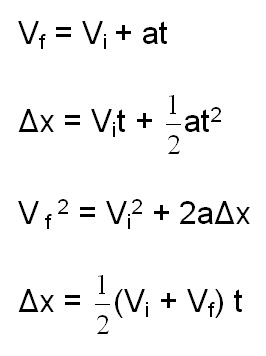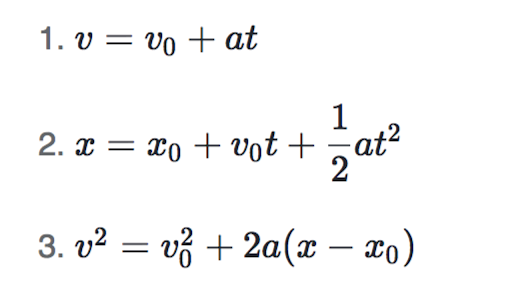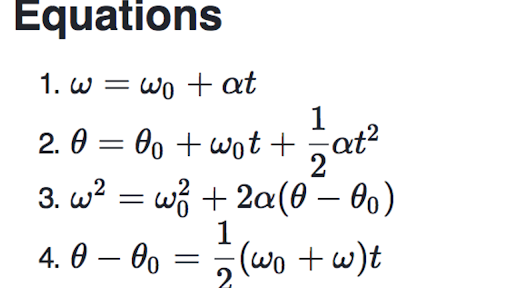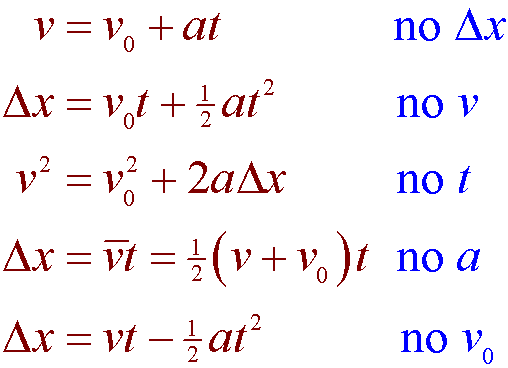Outstanding 3 Kinematic Equation

What are the 3 kinematic equations.
3 kinematic equation. Derivation of Kinematic Equations View this after Motion on an Incline Lab. A derivation is alluded to but not shown. When an object motion problem falls into these categories we may use the kinematic equations to solve it.
How to Derive the Kinematics Equations. 303 Kinematic Equations in One Dimension. Kinematic Equations for Linear Motion For constant acceleration ONLY To select the appropriate equation to solve a particular problem.
These parameters are comes together to form a equation is called Equation of motion. The slope is the acceleration The intercept is the initial velocity v f at v 0. About Press Copyright Contact us Creators Advertise Developers Terms Privacy Policy Safety How YouTube works Test new features Press Copyright Contact us Creators.
First we need to establish that acceleration is represented by the equation a t -98. The kinematic formula equations are often written as the following. Because velocity is the antiderivative of acceleration that means that v t a t and v t int a t.
Thus instead of using three simple rotations and three angles to keep track of a. The kinematic equations are simplifications of object motion. There is an additional equation for the average velocity Xv which is different from equation 1 and this new equation only applied in the case where the acceleration is constant which is true most of the time in this course.
Our goal in this section then is to derive new equations that can be used to describe the motion of an object in terms of its three kinematic variables. Three of the equations assume constant acceleration equations 1 2 and 4 and the other equation assumes zero acceleration and constant velocity equation 3. Click here to download or print the Study Guide for this section and use it to take notes as you follow along with the videos in this section.













